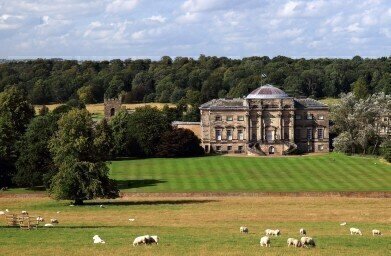Business News
How Can Landowners Help the Environment?
Aug 16 2020
The biggest landowners in England can do more to help the environment by planting more trees, according to a new report from Friends of the Earth. The environmental charity collated data gathered from land registries, the National Forest Inventory and geographic mapping technology to produce an in-depth look at how much of the areas belonging to the country’s largest landowners are forested.
Their findings showed that very few of the top ten landowners show a significant improvement on the national average of forest cover in England, which currently stands at just 10%. Therefore, these organisations – several of which are government owned – have a duty to plant more trees (which are excellent absorbers of carbon) and do their bit to help the UK reach its goal of becoming carbon neutral by 2050.
Disheartening findings
Of the top ten landowners in the country, only the Forestry Commission had a percentage of its land covered by trees that was substantially higher than the national average. Given its title and purpose, it’s perhaps unsurprising that 85% of Forestry Commission land is given over to trees, but better could be expected of other nature- and heritage-oriented organisations like the RSPB (10%) and the National Trust (18%).
Meanwhile, government departments such as the Ministry of Defence (15%), United Utilities (12%), Highways England (12%) and Network Rail (11%) returned disappointing results. The royal family’s Crown Estate (15%) and Duchy of Cornwall (6%) are also underwhelming, while the Church of England came bottom of the pile with just 4% of its land covered by trees.
Room for improvement
Those behind the study argue that ramping up efforts to plant more trees could be a huge boost in achieving national greenhouse gas emissions targets, of which becoming carbon neutral by 2050 is one. According to Friends of the Earth, tree coverage in the country should double in the coming decades and the 2.3 million acres owned by the largest landowners are a logical place to start.
“Much of England is owned by a very small number of landowners, who have a responsibility to better use their land in a way that helps address the climate and nature crises facing us all,” commented Guy Shrubsole of Friends of the Earth. “A big part of [tackling these crises] means growing more trees, which would remove planet-wrecking carbon from the air and provide homes for wildlife.”
Plans in the pipeline
For their part, some of the bodies implicated in the report have pointed to reforestation projects that are already underway. For example, the National Trust announced plans to plant 20 million trees in the coming years, which represents an area one-and-a-half times the size of Manchester. The Duchy of Cornwall is currently undertaking an assessment of its land, while water companies (including those belonging to the government’s United Utilities) plan to plant 11 million by 2030.
Meanwhile, the Church of England has rejected the findings of the study, arguing that 4% tree cover for its 105,000 acres of land is not an accurate reflection of reality. They dispute the acreage for starters, claiming that Church Commissioners are in control of just 102,000 acres, while they also point to 2.6 million trees planted last year as evidence of the report’s inaccuracies.
Digital Edition
IET 34.2 March 2024
April 2024
Gas Detection - Biogas batch fermentation system for laboratory use with automatic gas analysis in real time Water/Wastewater - Upcycling sensors for sustainable nature management - Prist...
View all digital editions
Events
Apr 22 2024 Hannover, Germany
Apr 22 2024 Marrakech, Morroco
Apr 23 2024 Kuala Lumpur, Malaysia
Apr 23 2024 Kintex, South Korea
Apr 23 2024 Edmonton, AB, Canada



















